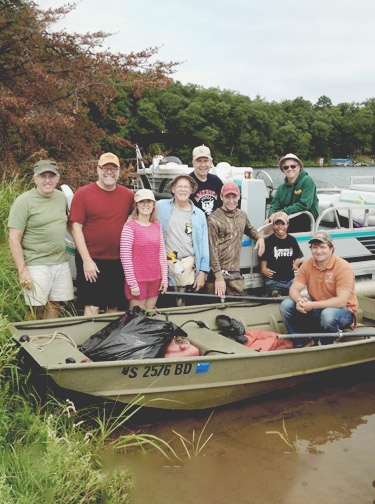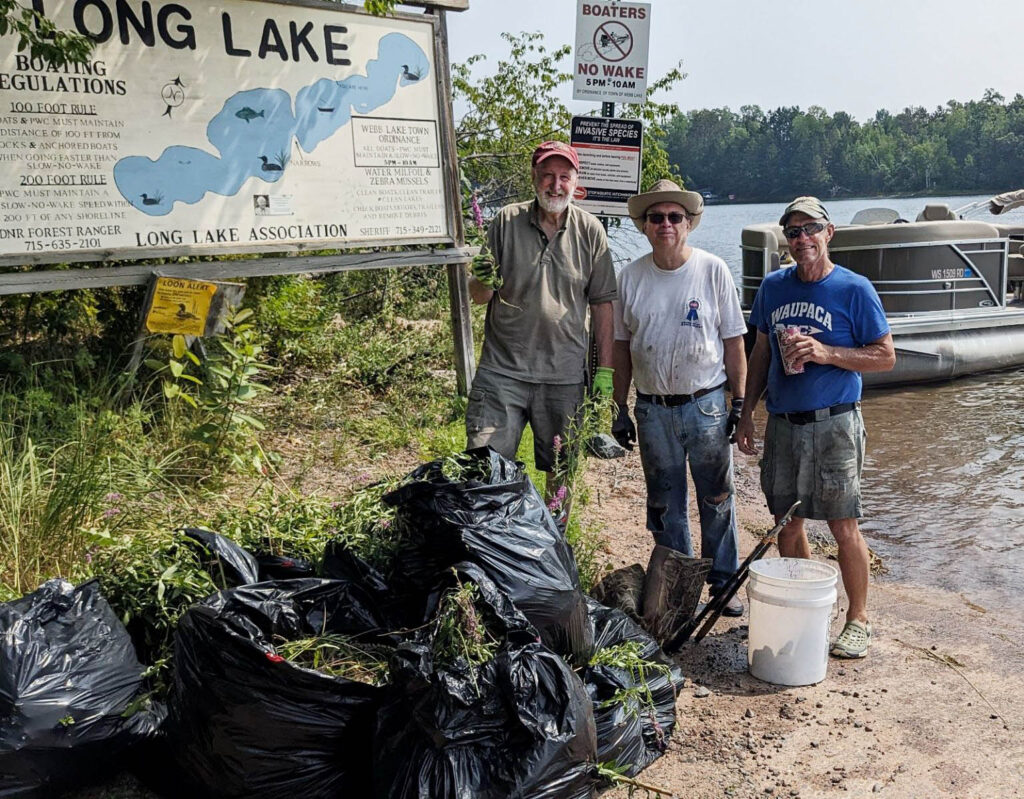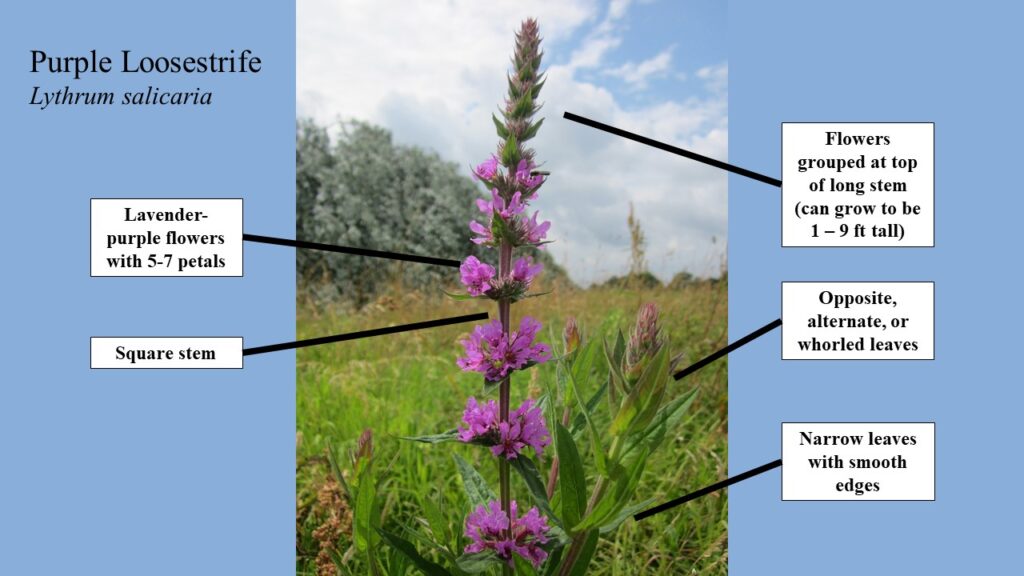Purple Loosestrife
Purple loosestrife started out as a plant that was sold in nurseries. It produces a huge amount of seeds and can be transported by birds and wind. It has become an invasive species on our lake. The Long Lake Association is doing all it can do to eliminate this purple perennial. You can help too!
We have three methods of control:
- Digging the plant out by its roots. Pulling purple loosestrife is difficult when the plant is big, and it is hard to get all of the roots.
- Removing the flowers before they go to seed. The time to cut is mid July into August, before the plants go to seed. Dispose of your harvest in large garbage bags. But cutting and destroying the flowers only stops the spread of seeds, it does not get rid of the plant.
- Setting out colonies of special beetles which eat the plants. The association has been raising beetles for a number of years.
Everyone can help, simply check your own property and your neighbors. If you have too much to handle please contact a Board member from the association.


2023 Volunteers Steve, Tom and Mark pose by their days work of pulling Purple Losestrife by hand. Digging & hand pulling purple loosestrife is easiest when plants are young (up to two years) or when in sand. Older plants have larger roots that can be eased out with a garden fork. Remove as much of the root system as possible, because broken roots may sprout new plants.
If you, as a property owner on Long Lake, think that you may have Purple Loosestrife, contact your lake association or reach out to Mark Michel or Steve Hunnicutt. Together, we’ll work with other members/volunteers in our associations to identify and remove Purple Loosestrife on the lake

Controlling the spread of purple loosestrife is crucial to protecting vital fish, wildlife and native plant habitat. Purple loosestrife can easily spread if improper control methods are used. The following simple guidelines will ensure that your efforts to control the spread of purple loosestrife are effective.
The best time to control purple loosestrife is in late June, July and early August, when it is in flower, plants are easily recognized, and before it goes to seed. Once flower petals start to drop from the bottom of the spike, the plant begins to produce seed. Control activities can continue during this time, but require greater care so seeds are not shaken from the plant. At sites where plants have gone to seed, remove all of the flowering spikes first by bending them over a plastic bag and cutting them off into the bag. Further cutting of stems or pulling can now take place without fear of spreading the tiny seeds.
Be aware that your clothes and equipment may transport the small seeds to new areas. Thoroughly brush off your clothes and equipment before leaving the site.
Keep site disturbance to a minimum. Wetlands provide habitat for many native song birds, waterfowl, mammals, amphibians, and fish which depend on native wetland vegetation. Wetlands are also home to many rare and delicate plants. Take care not to trample or damage native vegetation when controlling purple loosestrife.
